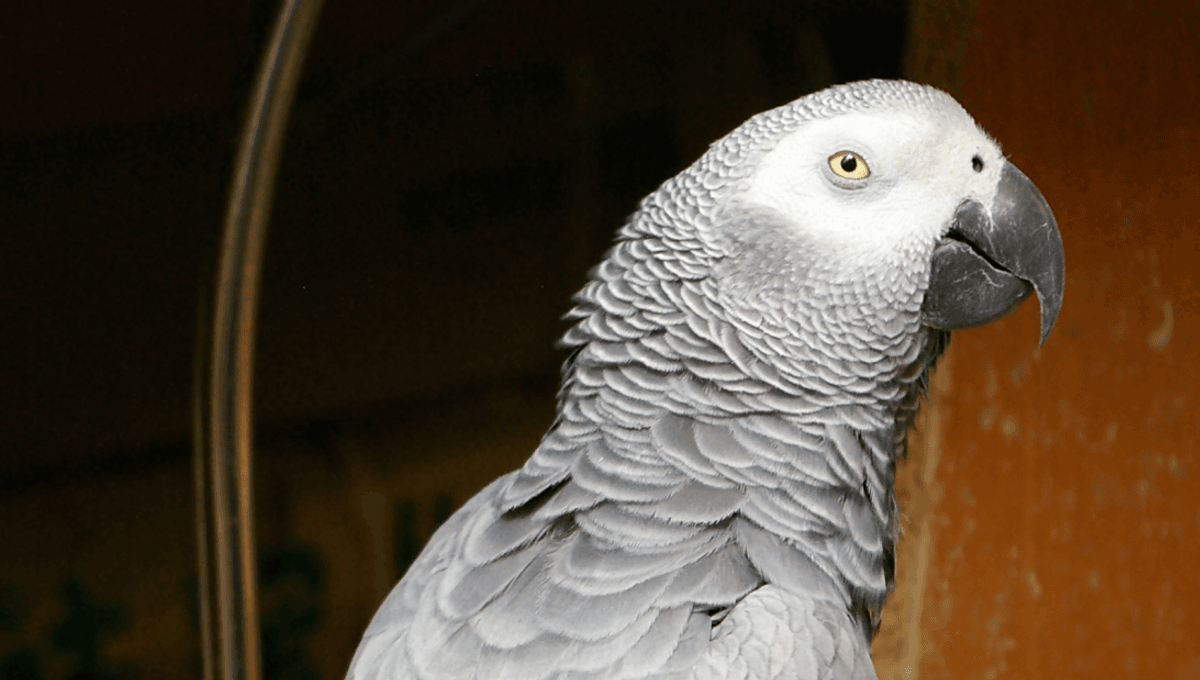
Human intelligence has often been held apart from that of non-human animals, but as time goes by we are increasingly discovering that we’re not all so different. A pivotal moment in our understanding of animal intelligence came in 1976 when something remarkable broke out of an egg.
The young bird wasn’t considered remarkable at the time of his birth, but over the next 30 years he would completely change what we thought we knew about animal cognition. His short life (for his species) came to an end in 2007 – fittingly, with the eerily poetic last words, “You be good. I love you. See you tomorrow.”
Who was Alex the parrot?
Alex the parrot was an African gray parrot. He was purchased from a pet store by animal psychologist Irene Pepperberg while she was finishing her PhD in theoretical chemistry. Her goal: to study his cognitive capabilities and communication – something gray parrots are (in)famous for (highly recommend you read about the parrots that had to be removed from public view for swearing at visitors).
Together, Pepperberg and Alex – a backronym for A-vian L-anguage EX-periment – embarked on decades of training that primarily used the model/rival technique. It involves two trainers demonstrating a behavior they hope the observer – in this case, Alex – will pick up.
The roles of the trainers were reversed to demonstrate that these exchanges were interactive, and correct answers were met with an object reward. Mistakes are corrected through a kind of scolding as the object is taken away.
Alex started to get the hang of these interactions, building his vocabulary and even practicing his words on his own. Then, one day, while looking in a washroom mirror, he did something almost unheard of in non-human animals.
Alex the parrot asks a question
Alex was looking into a mirror one day in 1980 when he leaned in closer to his reflection. According to laboratory student Kathy Davidson, Alex asked, “What’s that?” indicating himself in the mirror.
“That’s you,” Davidson replied, adding, “you’re a parrot”.
Looking again, Alex asked, “What color?” to which Davidson informed him, “Gray. You’re a Gray Parrot, Alex.”
This was how the bird learned the word “gray”, in an interaction that appeared to show plenty of self-awareness. It was a small interaction between a bird and its carer, but it raised big questions about the hidden depths of animal cognition.
The Alex Studies
Alex’s training continued for many years, and by 1999, Pepperberg published The Alex Studies, a book listing his many achievements. As reported by The New York Times, they included – though were not limited to – identifying 50 different objects, distinguishing seven colors and five shapes, knowing the difference between over and under, recognizing quantities up to six, and even identifying materials. In Pepperberg’s eyes, Alex the parrot was capable of understanding a question, thinking about it, and knowing the correct answer.
His achievements weren’t celebrated by everybody, however. Many refuted the idea that his responses constituted much in the way of complex thought, instead believing they were more of a kind of performance.
There were others, however, who were more open to the idea that we might have had it wrong as to other animals’ capacity to think.
“A bird can express his conscious thoughts and feelings is a great advance – we used to think that was impossible,” said Dr Donald Griffin to the NYT. As the author of Animal Thinking, Griffin was no stranger to the widespread resistance to the idea that animals could possess this degree of consciousness. “The intensity of the aversion is incredible. It’s a very touchy subject. Scientists don’t like to be told that a valid reason for what an animal does is the possibility that it does it with any consciousness.”
Alex the parrot’s last words
After 31 years of defying expectations, Alex the parrot slipped away quite unceremoniously one night in 2007 from unknown causes. The evening before, when saying goodnight to Pepperberg as he always did, he said, “You be good. I love you. See you tomorrow.” A class act, as ever.
Since then, another remarkable gray parrot has made a name for itself: Apollo, who holds the Guinness World Record for the most items identified within a 3-minute window. And if you’re still asking yourself, “Do animals think?” read our deep dive into everything science knows so far about animals’ sentience, consciousness, and intelligence.
Source Link: “You Be Good. I Love You”: How Alex The Parrot Rewrote Our Understanding Of Animal Intelligence